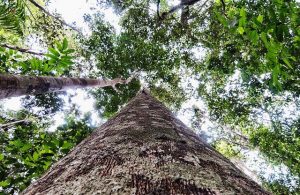 What is a forest? And how do you restore one?
What is a forest? And how do you restore one?
These seemingly simple questions were interrogated – with a focus on solutions – during a panel discussion at the 2017 Association for Tropical Biology and Conservation Meeting, recently concluded in Merida, Mexico.
A group of experts on Latin American forests examined both the conservation and restoration of secondary forests from a variety of angles, including the ecological, political and social dimensions of such spaces.
Beginning with the premise that “secondary forest regrowth following agricultural land use represents a major component of human modified landscapes across the tropics”, the panel emphasized the essential role of secondary forests for humans living in proximity, as well as for restoration initiatives and international goals, such as the United Nations Aichi Biodiversity Targets.
REORIENTING
“Natural regeneration in secondary forests has been overlooked, and can be a restoration tool for large-scale initiatives,” panelist and Center for International Forestry Research (CIFOR) Principal Scientist Manuel Guariguata said.
The 12 July 2017 discussion titled, “The role of tropical secondary forests in conservation and restoration”, was a welcome exploration of these neglected landscapes, formerly native forest cleared for agriculture, ranching or other purposes and later deserted.
Research carried out across the tropics over the last few decades unanimously agrees that these lands, which then start to host trees and shrubs and slowly attract birds and other wildlife on their path to maturity, are valuable in countering primary forest loss and as providers of ecosystem services. With proper management, they provide both timber and non-timber products to people nearby – thereby proffering both social and ecological rewards.
In a presentation titled, “Key governance issues and the fate of secondary forests as a tool for large-scale forest restoration”, Guariguata said, “the permanence of secondary forests in tropical landscapes largely depends on good governance, particularly through continued dialogue between government agencies, particularly environment and agriculture ministries.”
Improved governance for improved forests “would include the recognition that secondary forests are part of highly dynamic land-use systems that can and do change and unlikely to be managed either by a single government sector or scientific discipline,” he added.




